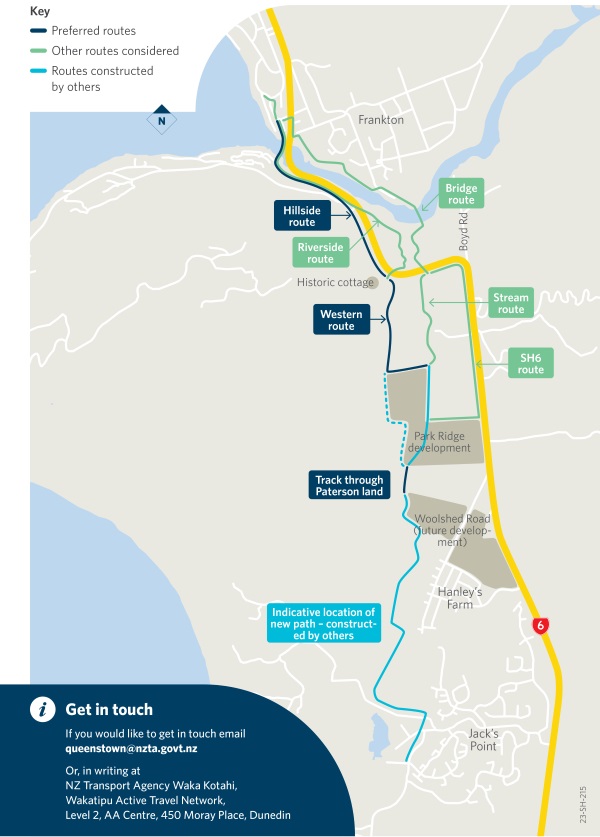The Queenstown Trails Trust boss is predicting ‘‘absolute chaos’’ for commuters of all types within the next three years.
Mark ‘Willy’ Williams estimates 30,000 people will be living along the southern corridor — between Kelvin Heights and Oraka (formerly Lakeside Estates) — by the end of this decade, while the two-lane Kawarau Falls bridge, opened in May 2018, will be at capacity by 2027.
By then, the community will likely also be dealing with highly-disruptive NZ Transport Agency Waka Kotahi (NZTA) works at the BP roundabout — a project Mountain Scene understands is likely to take three years.
Meantime, active travel networks, which could take some pressure off the roads, are making painfully slow progress.
Given indications there’ll be no more government funding coming for such trails, Williams is concerned those not already under construction may not eventuate.
He says of the multiple active travel networks proposed by the Way To Go partnership’s business case, endorsed by NZTA, just one — from Arthurs Point to Queenstown — is under construction.
It’s received funding through the ‘Transport Choices’ package, part of NZTA’s climate emergency response fund and is expected to be completed next month.
Williams says while that’s ‘‘great’’, because there’s no active travel crossing over the Shotover River, cyclists and pedestrians still have to share the one-lane Edith Cavell Bridge with vehicles.
‘‘My biggest fear with that one is that as soon as the BP roundabout works begin … all the traffic coming into town is going to try to come via Arthurs Point.
‘‘That Arthurs Point bridge is going to become an absolute nightmare … [it will be] three years of absolute chaos.’’
There’s rising frustration, though, at a lack of progress on one of the ‘‘priority’’ active travel networks, in particular.
Dubbed the ‘A7’, it’s to link Jack’s Point to Remarkables Park.
Part of the first of two stages involved in the overall project, initially priced at $134 million, which received $14m from NZTA, it was originally pegged for completion in 2021.
It’s still on paper.
To be governed and funded by NZTA, the latest update from NZTA, in December, says investigations are continuing on its ‘‘preferred routes’’.
The initial route, comprising an underpass through private property and a bridge over the Kawarau River, near Boyd Rd, has been ruled out due to poor ground conditions at the proposed bridge site.
Two new preferred options are being considered — the ‘Western’ route, running along the base of Peninsula Hill, and the ‘Hillside’ route, above the south side of State Highway 6, connecting to the historic Kawarau Falls Bridge, and on to the Lakeside Trail.
Williams appreciates there are a ‘‘lot of moving parts’’ required to get that trail up and running, but the clock’s ticking.
Active commuters are doing a daily dice with death navigating the ‘‘bloody dangerous’’ state highway, made worse by increasing congestion.
‘‘That’s why this [active travel link] needs to happen right now.’’
Adding to the frustration is construction of the $128m arterial road, the benefit of which Williams questions.
‘‘You’re still bringing traffic along the state highway, straight into Queenstown, where they’ve got nowhere to park.
‘‘And you’ve encouraged vehicles, because you’ve not built any active transport, because all you’ve got is road.
‘‘We’ve got to think about changing the way we do things moving forward.’’




